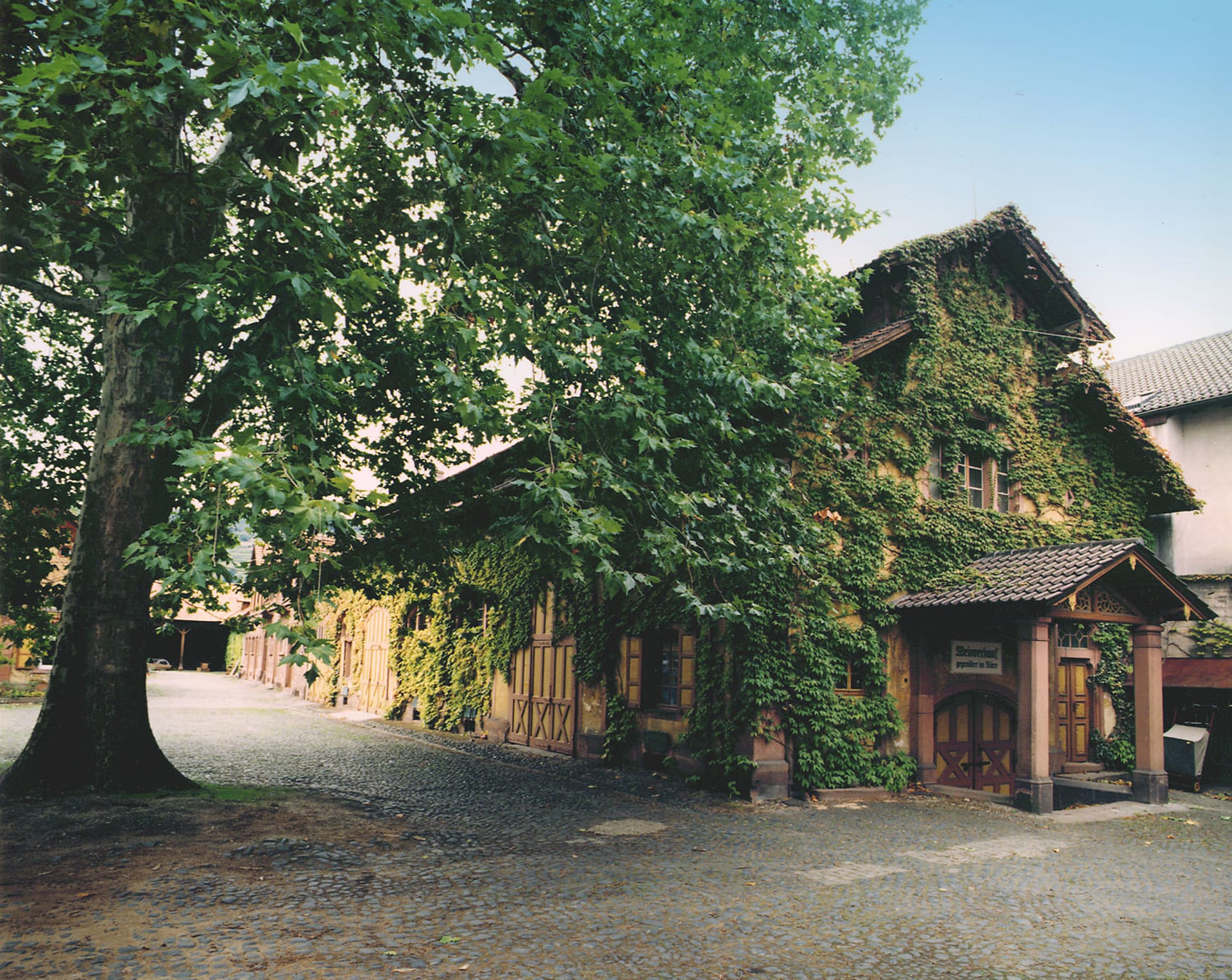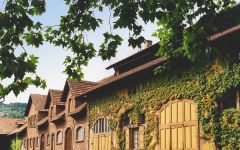Villa Wolf Pfalz Pinot Noir Rose 2015
-
Wine
Enthusiast


Product Details
Your Rating
Somm Note
Winemaker Notes
This wine is perfect for holiday meals, especially when ham is involved.
Professional Ratings
-
Wine Enthusiast
Intense mineral tones of smoke and crushed slate collide with fresh red cherry and raspberry flavors on the palate of this bang-for-your-buck rose. Its concentrated fruit flavors are luscious and satisfying but also vibrantly structured, proving dexterous beyond the apéritif hour.
Other Vintages
2020-
Wilfred
Wong
-
Wilfred
Wong -
James
Suckling -
Wine
Enthusiast
-
Wilfred
Wong -
Wine
Enthusiast









The Villa Wolf Estate is owned by Ernst Loosen of the Dr. Loosen Estate in the Mosel. The goal at Villa Wolf is to produce wines that express the pure, authentic terroir of the region. Made in the classic style of the Pfalz, Villa Wolf Rieslings are drier and more full-bodied than Mosel Rieslings, with fully ripe fruit flavors and a characteristic stoniness in the aroma. To preserve the naturally high quality of the vineyards, we employ sustainable viticultural practices and emphasize gentle handling of the fruit through traditional, minimalist winemaking.
The estate is managed by a talented young winemaker, Patrick Möllendorf, who had previously worked in the cellar at Dr. Loosen. He has brought renewed energy and focus to the viticulture and winemaking at Villa Wolf. With sustainable viticulture, minimal processing and their constant pursuit of improvement, Patrick strives to capture the purity and special characteristics of the region, vineyard and grape variety in each of their wines. The philosophy is based on the belief that great wines must start in the vineyard. So Patrick works closely with nature, using sustainable practices to nurture biodiversity in the vineyards, providing a healthy and diverse microbiology in the soil. This is important for wines to express the character of the grape and the soil in which it is grown. Organic certification for the estate vineyards was achieved in 2021. This approach is also carried into the cellar, with a focus on gentle handling of the wine throughout the entire process. This approach retains the clean, fresh fruit that represents the Villa Wolf style. The team is committed to traditional vinification methods, such as fermentation and aging in large, neutral oak casks, and spontaneous fermentation with natural yeasts.

Whether it’s playful and fun or savory and serious, most rosé today is not your grandmother’s White Zinfandel, though that category remains strong. Pink wine has recently become quite trendy, and this time around it’s commonly quite dry. Since the pigment in red wines comes from keeping fermenting juice in contact with the grape skins for an extended period, it follows that a pink wine can be made using just a brief period of skin contact—usually just a couple of days. The resulting color depends on grape variety and winemaking style, ranging from pale salmon to deep magenta.

As the world’s northernmost fine wine producing region, Germany faces some of the most extreme climatic and topographic challenges in viticulture. But fortunately this country’s star white wine variety, Riesling, is cold-hardy enough to survive freezing winters, and has enough natural acidity to create balance, even in wines with the highest levels of residual sugar. Riesling responds splendidly to Germany’s variable terroir, allowing the country to build its reputation upon fine wines at all points of the sweet to dry spectrum, many of which can age for decades.
Classified by ripeness at harvest, Riesling can be picked early for dry wines or as late as January following the harvest for lusciously sweet wines. There are six levels in Germany’s ripeness classification, ordered from driest to sweetest: Kabinett, Spätlese, Auslese, Beerenauslese, Trockenbeerenauslese and Eiswein (ice wine). While these German wine classifications don’t exactly match the sweetness levels of the finished wines, the Kabinett category will include the drier versions and anything above Auslese will have noticeable—if not noteworthy—sweetness. Eiswein is always remarkably sweet.
Other important German white wine varieties include Müller-Thurgau as well as Grauburguner (Pinot Gris) and Weissburguner (Pinot Blanc). The red wine, Spätburgunder (Pinot Noir), grown in warmer pockets of the country can be both elegant and structured.
As the fourth largest wine producer in Europe (after France, Italy and Spain), in contrast to its more Mediterranean neighbors, Germany produces about as much as it consumes—and is also the largest importer of wine in the E.U.
